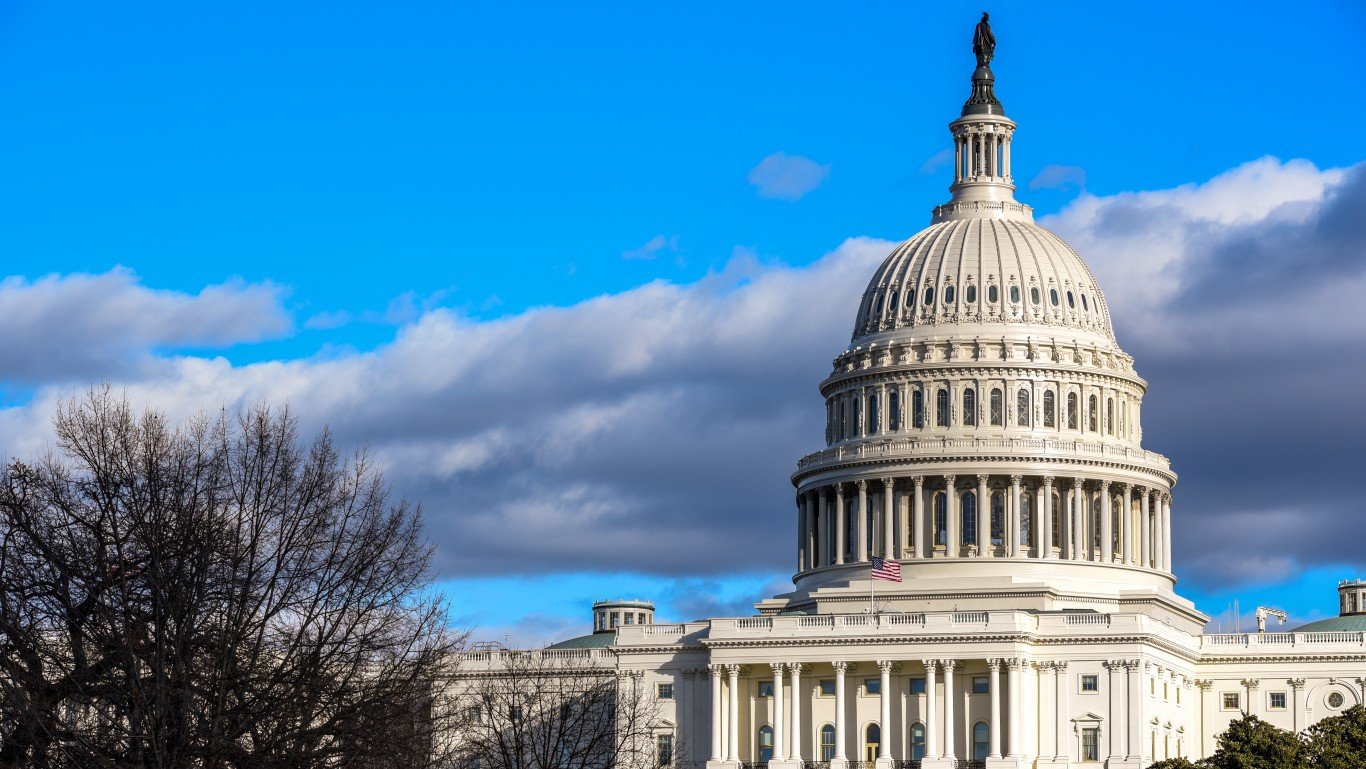

A number of companies across America will not make it through the COVID-19 pandemic intact. They are both large and small. What they share in common is a drop in access to capital. Retailers and consumer services companies are most at risk, at least for now.
A prime example is crippled and storied retailer J.C. Penney Co. Inc. (NYSE: JCP), which most likely cannot handle a sharp double-digit drop in same-store sales. J.C. Penney’s stock is down 81% in the past two years.
The federal government might provide it a lifeline, but only if Congress rolls out emergency financial measures to help jobs. However, will the government move to save a major department store chain in a period when several of the largest brick-and-mortar retailers are in trouble?
J.C. Penney stock has fallen to $0.48 per share and was at one point down almost 40% in the past week. That means it trades at a level that anticipates an end of solvency. The retailer currently has over 850 stores and employs 95,000 people. The effect of a mass layoff is unthinkable.
How Has J.C. Penney Fared?
Last year, J.C. Penney suffered a 7.1% decline in revenue to $10.7 billion. It posted a net loss of $268 million, compared to a loss of $255 million the year before, which shows that a turnaround has not gained traction.
At the end of the period, J.C. Penney had cash and cash equivalents of $386 million. Free cash flow for the year was $145 million, which leaves it very little margin. J.C. Penney said it expects a positive free cash flow this year.
Among other balance sheet items, it had cash and short-term investments of $278 million. Merchandise accounts payable were $786 million. Noncurrent operating lease liabilities were $1.1 billion.
Additionally, for the year, adjusted EBITDA was $583 million, a 2.6% gain over the prior year.
However, that is against a 3.5% to 4.5% drop in comparable store sales. That figure could become much worse in a matter of weeks, as people desert malls and other retailers.
J.C. Penney has just closed a few more stores, in Missoula, Montana; Valley Stream, New York; Raleigh, North Carolina; Akron, Ohio; Tulsa, Oklahoma; and Myrtle Beach, South Carolina.
Do Bailouts Become Part of the Current Economic Environment?
The conversation of bailouts is almost always accompanied by the debate about moral hazard. Those who have not guarded against risk in the past should not be bailed out.
J.C. Penney does not fall into that category. This is because most of its major mistakes were made years ago by different management. Also, it is part of an industry in which trends have moved almost completely against it.
The first issue is more debatable. The second is an ongoing conversation about moral hazard.
At the core of a debate about a government bailout of J.C. Penney, at least in the very short term, is 95,000 jobs, and what the loss of those jobs does to the overall national economy. The risk to the retail business over the next several months is large.
The End of the Road for J.C. Penney, or Just Old News?
J.C. Penney has been left for dead on several occasions.
The tipping point for the company was the hiring of former Apple retail executive Ron Johnson. After he became CEO in 2011, J.C. Penney shares skyrocketed. How could an Apple executive, one who ran its super-successful and super-slick stores, possibly lose?
The answer to the question was that Johnson ruined J.C. Penney in record time. He was out by early 2013. His radical overhaul of J.C. Penney’s pricing and merchandise mix drove same-store sales down by as much as 20% year over year in some quarters.
The turnaround actually put J.C. Penney further behind the likes of Sears, Kmart, Kohl’s and Macy’s. It had lost two precious years. They also happened to be years in which e-commerce giant Amazon was having some of its greatest success.
The Johnson debacle had a “back into the future” aspect to it. The chief executive from before Johnson, Mike Ullmann, came back again as CEO afterward.
The Government Holds the Key to Its Future No Matter What
J.C. Penney has been losing ground for years. It is beyond gaining it back. There are too many powerful retailers like Walmart, Target and Amazon. From a competitive standpoint, J.C. Penney is gone.
The disaster of COVID-19 may be, as a very long shot, the only thing that buys J.C. Penney time.
So, watch same-store sales, cash balances and long-term debt levels. Store lease durations and whether J.C. Penney has real estate assets also are critical. EBITDA is not part of the profit and loss calculations for the retail industry.
E-commerce is not a factor that J.C. Penney breaks out in its quarterly statements or those filed with the U.S. Securities and Exchange Commission (SEC), in either 10Q or 10K statements. Standard & Poors has offered default rates for troubled retailers. All have distressed debt ratings and have been downgraded well into junk bond territory.
Among other issues is whether J.C. Penney received a qualified opinion from its auditors.
Smart Investors Are Quietly Loading Up on These “Dividend Legends” (Sponsored)
If you want your portfolio to pay you cash like clockwork, it’s time to stop blindly following conventional wisdom like relying on Dividend Aristocrats. There’s a better option, and we want to show you. We’re offering a brand-new report on 2 stocks we believe offer the rare combination of a high dividend yield and significant stock appreciation upside. If you’re tired of feeling one step behind in this market, this free report is a must-read for you.
Click here to download your FREE copy of “2 Dividend Legends to Hold Forever” and start improving your portfolio today.
Thank you for reading! Have some feedback for us?
Contact the 24/7 Wall St. editorial team.
 24/7 Wall St.
24/7 Wall St.


